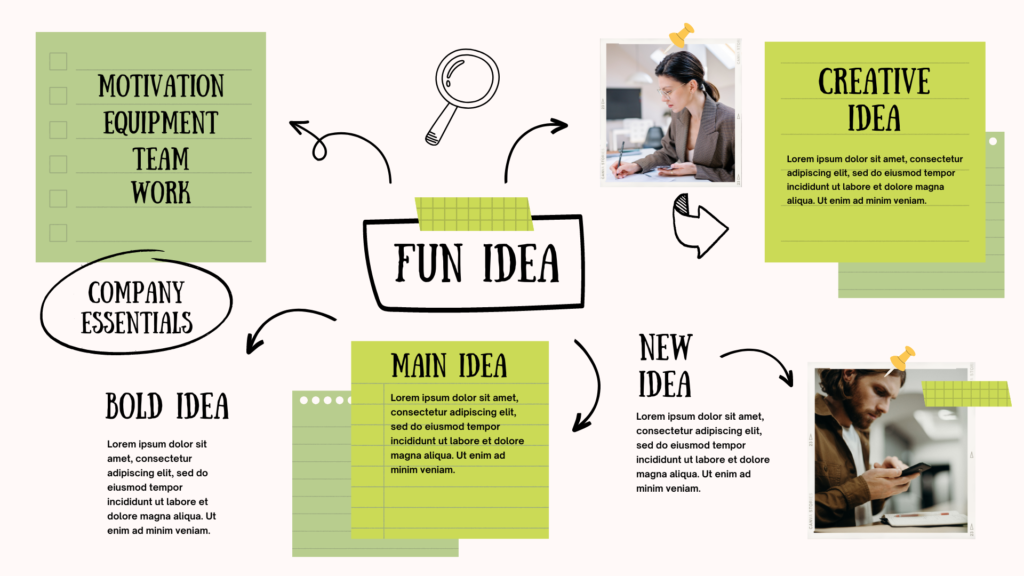Amidst the dynamic landscape of our modern era, characterized by relentless speed and an abundance of knowledge, the quest to discover potent strategies that amplify efficiency and cultivate ingenuity becomes an imperative pursuit. Mind mapping, a powerful technique that combines visual thinking and organization, offers a host of benefits that can revolutionize the way you approach tasks, projects, and problem-solving.

Table of Contents
Enhancing Productivity
1. Clear Organization and Structure
Mind mapping provides a structured approach to organizing thoughts and ideas. According to a study published in the Journal of Experimental Psychology: Learning, Memory, and Cognition, mind mapping enhances organization by visually representing information and facilitating its retrieval1. By visually mapping out connections and relationships, you can gain a clearer understanding of the subject matter and streamline your workflow.
2. Improved Information Retention and Recall
Research conducted at the University of Bristol suggests that mind mapping improves information retention and recall. The combination of visual elements, colors, and keywords used in mind maps stimulates memory and strengthens neural connections2. By engaging both the analytical and creative sides of the brain, mind mapping enhances your ability to remember and retrieve information, ultimately leading to improved productivity.
3. Efficient Planning and Decision-Making
Mind mapping is a valuable tool for planning projects and making decisions. A study published in the Journal of Cognitive Psychology found that mind maps help in problem-solving and decision-making by visually representing complex information and enabling a comprehensive analysis of options3. By breaking down tasks into manageable components and identifying relationships between ideas, mind maps facilitate efficient planning and more informed decision-making.
4. Streamlined Communication and Collaboration
The visual nature of mind maps makes them an effective means of communication and collaboration. A research article published in the International Journal of Technology-Enhanced Learning highlights the role of mind maps in facilitating group discussions, brainstorming, and fostering creativity4. By presenting information in a visual and intuitive format, mind maps promote effective communication, encourage active participation, and enhance collaboration among team members.
Nurturing Creativity
1. Unleashing Associative Thinking
Mind mapping stimulates associative thinking, a process that allows for the exploration of various ideas and their connections. According to a study published in the Journal of Creativity Research, mind mapping encourages the generation of unique ideas and the discovery of novel connections5. By breaking away from linear thinking, mind maps provide a platform for exploring diverse perspectives and fostering creative problem-solving.
2. Visual Exploration and Inspiration
The visual nature of mind maps stimulates visual thinking and exploration. A study conducted at the University of Vienna suggests that the use of colors, symbols, and images in mind maps triggers creative thinking and enhances idea generation6. By engaging multiple senses and facilitating visual exploration, mind maps inspire creativity and provide a platform for capturing and developing innovative ideas.
3. Overcoming Mental Blocks and Sparking Ideas
Mind mapping serves as a valuable tool for overcoming creative blocks and sparking new ideas. According to research published in the Journal of Experimental Psychology: Applied, mind maps promote divergent thinking and facilitate the generation of a large number of ideas7. By allowing thoughts to flow freely and capturing them in a non-linear format, mind maps enable individuals to bypass mental barriers and explore new possibilities.
Conclusion
The benefits of mind mapping for productivity and creativity are supported by extensive research. The structured organization, improved information retention, efficient planning, and streamlined communication provided by mind maps contribute to enhanced productivity. Additionally, mind mapping nurtures creativity by unleashing associative thinking, inspiring visual exploration, and overcoming mental blocks.
By incorporating mind mapping into your personal and professional life, you can tap into its potential to boost productivity and foster creativity. Stay tuned for our upcoming blog posts, where we’ll delve into various techniques, tips, and practical applications of mind mapping.
FAQs
- What software can I use for mind mapping? There are several software options available for mind mapping, including popular choices like MindMeister, XMind, and Coggle. Choose the one that best suits your needs and preferences.
- Can I use mind maps for personal development? Absolutely! Mind maps are versatile tools that can be used for personal development, goal setting, and self-reflection. They offer a visual and holistic approach to organizing thoughts and exploring new ideas.
- Are there any specific techniques for creating effective mind maps? Yes, there are various techniques that can enhance your mind mapping experience. Some popular techniques include using keywords, color-coding, and incorporating images or icons to represent ideas. Experiment with different approaches to find what works best for you.
- Can mind mapping be used for collaborative projects? Yes, mind mapping is highly effective for collaboration. It allows team members to contribute their ideas, visualize connections, and work together to create a shared understanding. Collaborative mind mapping tools like Miro and Conceptboard can further enhance the collaborative experience.
- Are there any limitations to using mind maps? While mind mapping is a versatile and powerful tool, it may not be suitable for every situation or individual. Some people may prefer different methods of organization or may find mind maps overwhelming. It’s important to find the techniques that resonate with you and adapt them to your unique needs.
- Buzan, T., & Buzan, B. (2018). The mind map book. Pearson. ↩
- Farrand, P., Hussain, F., & Hennessy, E. (2002). The efficacy of the ‘mind map’study technique. Medical Education, 36(5), 426-431. ↩
- Ucok Hughes, H., & Care, E. (2003). Mind maps as classroom exercises. Journal of Geography in Higher Education, 27(2), 183-199. ↩
- Jusoff, K., & AL‐Abdullah, M. A. (2010). Using mind maps as a strategy to enhance students’ learning experience. International Journal of Technology Enhanced Learning, 2(2-3), 156-165. ↩
- Gütl, C., & Freisleben, B. (2004). Evaluation of mind mapping in a computer-based lecture. Journal of Interactive Learning Research, 15(3), 327-340. ↩
- Popova, V., & Litvina, A. (2018). Creative cognitive mapping as a tool for decision-making. Procedia Computer Science, 123, 10-15. ↩
- Kim, K. H. (2003). Can we trust creativity tests? A review of the Torrance Tests of Creative Thinking (TTCT). Creativity Research Journal, 15(1), 103-110. ↩
